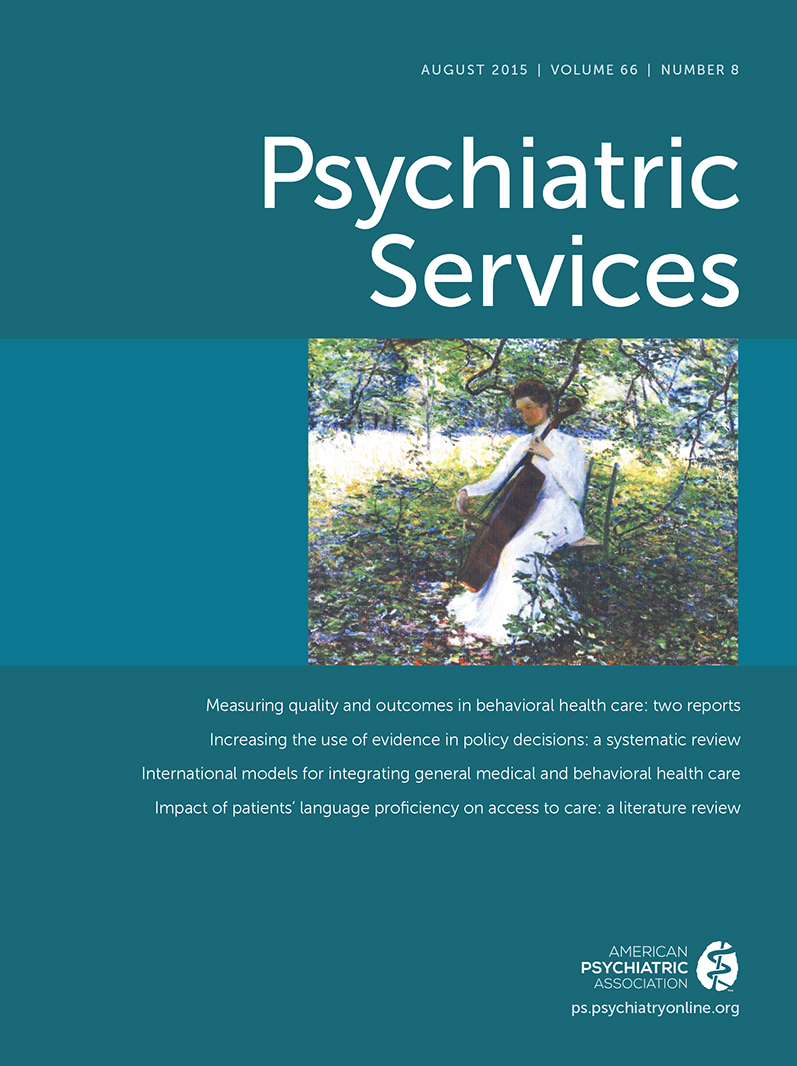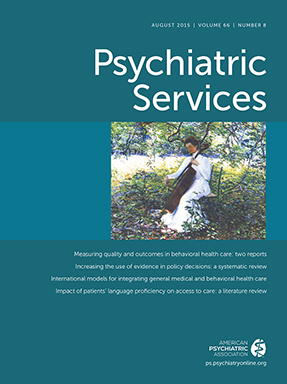Increasingly, health care leaders in the United States and other countries have recognized that individuals with behavioral health conditions frequently battle comorbid general medical conditions and that behavioral conditions are highly prevalent among the highest-cost, most frequently hospitalized patients. Multiple countries have developed models of integration adapted to their health care systems.
Integration models (
1–
5) are typically framed around combinations of contractual, functional, educational, organizational, treatment, care coordination, and care management dimensions. Models generally specify their target populations (the “who”), which may range from individuals with specific combinations of behavioral health and general medical conditions to entire populations; the services offered by the program (or that are contracted out or to which patients are referred) (the “what”); and the locus of organizational responsibility for program administration (the “where”). For example, ancillary behavioral health services may be centered around a general medical organization, primary care services may be centered around a behavioral health organization, or the organizing entity may be an overarching integrated health system or a multicomponent organization with both behavioral health and general medical representation. The “where” concept includes the potential for (indeed, the expectation of) linkages with “nonhealth” entities, including social services and housing agencies.
In this column, we examine integration models in England, Japan, and the Netherlands that were chosen to showcase implementation in a variety of health systems: the national health system in England, nationally regulated individual insurance market in the Netherlands, and a mixture of employer-sponsored and government-funded (for unemployed individuals) health insurance plans in Japan. We describe key practices and challenges applicable to successful practice implementation.
England
The National Health Service (NHS) provides systemwide mental health care via referral through primary care. Local NHS Clinical Commissioning Groups commission and sometimes deliver mental health services, and local government bodies (Local Authorities) provide home, day, and residential care, independent living schemes, and social work support.
In 2006, to combat problematic access to behavioral health services, the Improving Access to Psychological Therapy (IAPT) program was pilot-tested for depression treatment. The IAPT model includes access through self- and primary care referral, stepped care in accordance with National Institutes for Clinical Excellence guidelines, employment advising, electronic systematic monitoring of progress via the IAPT minimum data set, weekly outcome-informed therapist supervision, and pre- and posttreatment outcome measurement (
6).
The program achieved a 45% recovery rate (as measured by a decrease in scores to below specified clinical thresholds on the Patient Health Questionnaire–9 or the Generalized Anxiety Disorder 7), and 45,000 IAPT patients moved off government benefits in the first three years. IAPT has expanded to provide services to patients with medically unexplained symptoms, long-term general medical conditions, severe mental illnesses, older people, and children and youths. In its first three years, IAPT trained nearly 4,000 new practitioners, and it is projected to treat 900,000 patients annually by 2015, or 15% of the total estimate of six million people with common mental disorders.
The government committed in excess of £400 million to IAPT over four years; reimbursement is being tested through a payment-by-results pilot program (
6). Pre- and posttreatment scores on symptom measures for each patient determine payments, with a pay scale dependent on the amount of recovery. Costs are projected to be balanced by a savings of £272 million from reduced overall health care use.
Japan
Service provision in Japan relies on market mechanisms. Public insurance provides basic coverage, and there is no gatekeeping (
6). Japan has a large number of psychiatric hospitals, many of which also function as nursing homes. To deinstitutionalize mental health care and decrease stigma regarding care seeking, various financial incentives have been introduced for primary care referral to and collaboration with outpatient psychiatrists. In 2008, reimbursement was added for psychiatric emergency care for self-harming patients (diagnosis and treatment); since 2013, all 47 prefectures in Japan have been required to assess local behavioral health care needs and develop public services as part of a comprehensive health care plan (
7).
The National Center of Neurology and Psychiatry (NCNP), in collaboration with other national specialized care and research centers, has administered a national project to integrate behavioral health and general medical care focused on depression diagnosis and stepped-care treatment (
7), including a health information technology (HIT) follow-up system for patients with comorbid behavioral health and general medical conditions. The HIT system incorporates an information-sharing (social network) service, a community follow-up registry, and electronic reminders for patients and their families (for example, to monitor medication adherence). The NCNP also provides training programs to primary care physicians and mental health team members. An evidence-based notebook was also developed for patients to provide interactive personalized support, allowing for sharing of patient information between patients, families, and health and social care providers. Costs or outcomes data for this program have not been published.
The Netherlands
The 2006 Dutch Health Insurance Act (ZVW) introduced an individual mandate for private health insurance funded through an earmarked payroll tax, community-rated insurance premiums, and general tax revenue. In effect, the Netherlands operates an insurance marketplace, with independent, private individual health insurance policies covering most of the population. Behavioral health benefits (both in primary care and through specialist referral) are included in the essential benefits package. A range of models has been developed to integrate behavioral health and general medical care that are based on many successful implementations and evaluations of collaborative care models (
8). Several are described below.
From 2006 to 2012, the Trimbos Institute, in collaboration with over 30 primary care practices, ten specialty behavioral health institutions, and an occupational health care company, launched the Depression Initiative Primary Mental Health collaborative care model, a research and implementation project (
9) that covered over 30% of the Netherlands. The model consists of provision of antidepressant medication by a primary care provider (PCP), with a consultant psychiatrist available for advice; a nurse–care manager, known as a “practice support professional for mental health,” monitors patient progress and provides much of the behavioral health care. The model uses a Web-based decision aid and monitoring system for providers and patients. An evaluation found that compared with patients in usual care, those treated in the model were five times more likely to respond to treatment, and the number needed to treat was two. Extensive collaboration was established, not only with the PCPs but also with the occupational health care setting; in that setting the occupational therapist was the case manager in order to target returning to work (
9). This and subsequent successful evaluations led the government to adopt the model into the national essential benefits. From 2015, it is expected that 80% of mental disorders will be treated in the primary care setting. When more specialized care is required, psychiatrists are consulted, and if long-term specialty care is needed, the patient is referred to an independent psychologist, a psychotherapist, or a specialized behavioral health institution. Around 16% of adults with a diagnosed psychological problem are expected to be referred to such specialty care as a result of this gatekeeping system.
Finally, a national screening protocol—the pharmacotherapy health information technology HIT monitoring outcome survey (PHAMOUS)—has been developed for use in behavioral health settings and is fully covered by the ZVW. It consists of several self-reported surveys; interviews with the patient and caregiver about medication use, side effects, life events, and lifestyle; a physical exam; and blood tests. Nurses trained in behavioral health specialty care administer PHAMOUS, and a psychiatrist or other physician is responsible for assessing results and following up. All mental health organizations will be required to develop policies to reduce the risk of somatic complications, screen patients systematically, provide lifestyle coaching, integrate prevention of comorbid somatic conditions into the electronic medical record, and train clinicians in these areas.
Lessons Learned
Implementing key practices, including formalized partnerships between and within organizations, effective communication through the use of electronic records, care management with relentless follow-up, clinical registries for tracking and coordination, decision support for measurement-based, stepped care, access to evidence-based psychosocial services, self-management as part of a recovery framework, linkages with community organizations and resources, and ongoing systematic quality measurement and improvement, requires meeting several major challenges, which are described below. [A table listing key practices in the models described above is included in an online supplement to this column.]
Changing cultures.
All parties must establish shared values supporting collaboration in pursuit of patient-centered goals and using evidence-informed practices to treat the “whole person.” Strong leadership and strategic policy approaches that enhance capacity and shift incentives can initiate a cultural shift.
Developing new models for training and education.
Culture change depends on new approaches to training multidisciplinary providers as early as possible in their education. Interdisciplinary training is especially challenging given workforce heterogeneity in behavioral health (
10).
Bridging technology gaps.
Behavioral health providers (who often operate in independent “cottage industry” practice settings) are much less likely to have HIT access than general medical providers.
Changing payment models and incentives and establishing shared accountability.
Current reimbursement models generally fail to provide flexibility, start-up cost support, integrated team training, data management infrastructure, and incentives for establishing and sustaining the practices described above. The key will be adapting newly developing payment policies and accountability mechanisms to instill a sense of shared accountability between behavioral health and general medical providers.
Dealing with “cost-effectiveness conundrums.”
Evidence suggests that, in general, integrated care programs built around the chronic care model result in improved clinical and economic outcomes for patients. However, these programs do not reduce overall health care costs because they require initial investment and identify unmet needs. Some programs, such as the IAPT in England, have demonstrated cost savings in non–health care sectors, such as disability and unemployment, but those benefits are difficult to routinely quantify and may not be captured by payers and health systems. Further development and testing of predictive models and tailoring of multicomponent, multitarget intervention packages for specific high-risk patient subsets are needed.
Health care for individuals with comorbid behavioral health and general medical conditions is particularly complex and costly, and health care systems face multiple barriers to providing effective care. Multiple integrated care models have been tested in varied settings (
1,
3,
5) and in several countries, but successful implementation faces serious challenges that require creative policy and practice solutions.

